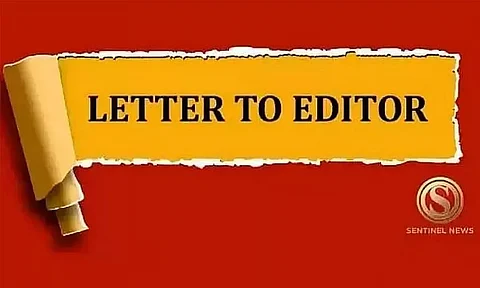
- Home
- Live Blog
- Breaking News
- Top Headlines
- Cities
- NE News
- Sentinel Media
- Sports
- Education
- Jobs

Repetition of 1947
In 1947, just after independence, Assam was almost going to be a part of the then East Pakistan due to a plot hatched by Sir Sadullah and his deputy Abdul Hamid Khan Bhasani. The crisis was averted by Lt Gopinath Bordoloi with his bold, uncompromising stand. The very same 1947-like crisis is again looming over Assam with massive infiltration of people from Bangladesh patronised by the erstwhile Congress government as a part of their vote bank policy, resulting in massive encroachment of government, forest, VGR, and PGR lands. This very process of encroachment by people from Bangladesh has created a massive demographic change in Assam, where khilongiyas have already become a minority in parts of lower Assam. During the last 5 decades, this infiltration went on unabated under Congress rule, as there was no Gopinath Bordoloi in the Congress party. Now, with the change of government at Dispur, under Dr Himanta Biswa Sarma, who is taking the matter very seriously even though he is facing obstacles from the enemies within, namely the three Gogois, Dr Hiren Gohain, AIUDF, and the Leftists, to name a few, unlike Lt Bordoloi, who had a free hand at that period.
AASU and AJYCP, the main student organizations, seem to be more vocal against CAA, as they have taken out big candlelightrallies protesting against CAA but not against the illegal encroachment issue, as they are secular bodies unlike BJP. Before parting, may I request the above-mentioned secular bodies to visit Bangladesh to see the plight of the Hindus? There is a huge difference between a refugee and an infiltrator. One seeks refuge; the other is out to sabotage.
Dr Ashim Chowdhury,
Guwahati
Aideu Handique
This is in reference to the article ‘Aideu Handique: A Life Sacrificed to Cinema’ published in your esteemed daily on the 10th of August 2025. I was absolutely devastated as I reached the end, and the unpleasant hardships Aideu Handique had to go through, which extended right up to the evening of her life, will always be a blot on humanity. I offer my compliments to the writer for reminding us how society treated one of its greatest assets, and I hope we never repeat anything of this sort in the future.
Dhiman Kakati,
Narangi, Guwahati
India-Russia relationships amidst US tariff pressure
US President Donald Trump recently slapped a 50% duty on Indian goods—an additional 25% atop the existing tariff—as punishment for continued discounted Russian crude oil imports. In response, India reached out to Russia via a fresh high-level call—PM Modi invited President Putin later this year as they reaffirmed their “special and privileged” partnership. The surprise moves by the US, announced without warning, triggered a political and economic storm. The recent tariff threats from the United States, particularly under Donald Trump’s stated “America First” revival, must be read alongside India’s deep and historic ties with Russia. For decades, Russia has been a steadfast partner—standing by us in times of war, supporting us in the UN Security Council, and supplying critical defence hardware when others imposed sanctions or withheld technology. India’s ties with Russia have long been defined by trust, shared history, and strategic necessity. From Moscow’s role in building steel plants in the early years of India’s development to its decisive backing during the 1971 Bangladesh conflict and decades of collaboration in space exploration and defence manufacturing, the relationship has evolved through shifting political landscapes. Even as India has diversified its partnerships over the past two decades—deepening cooperation with the US, Europe, and East Asia—the old foundation with Russia remains resilient.
By contrast, the US record has been transactional. Washington’s strategic embrace of India has often been shaped by its own rivalry with China rather than genuine alignment with India’s long-term interests. Now, with Trump returning to protectionist rhetoric, the imposition of punitive tariffs on Indian exports under the guise of “unfair trade” only underlines the fragility of this relationship.
Tariffs should be met with assertive trade diplomacy, diversification of export markets, and an unflinching defence of our sovereign right to choose partners. A strong India-Russia axis not only secures our strategic needs but also signals to the US that India is not a subordinate in any bloc. India’s foreign policy must therefore be guided by national interest, not by appeasing any superpower. Strengthening ties with Russia while diversifying other partnerships will ensure we remain self-reliant and resilient.
Chandan Goswami
Kumaranichiga, Dibrugarh